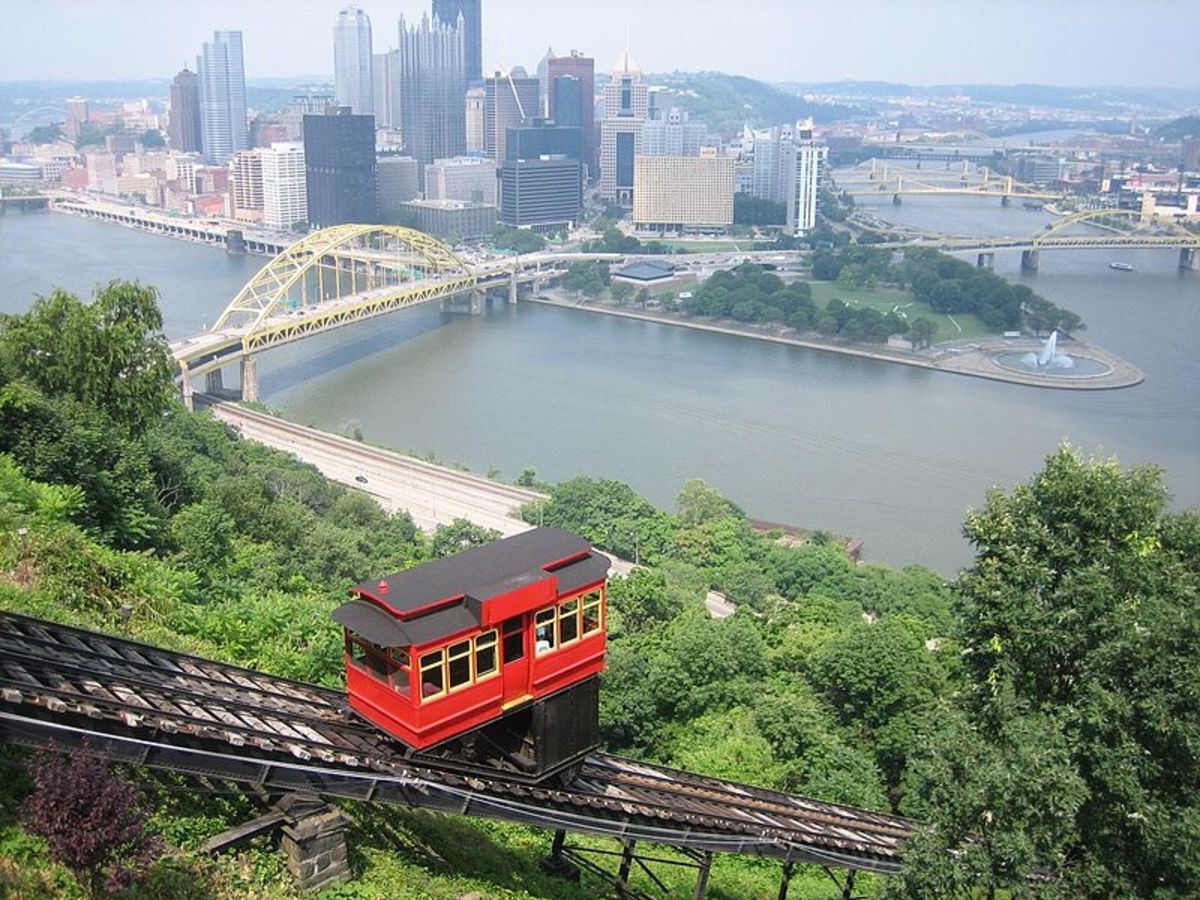Pittsburgh’s Hidden Inclines: Forgotten Funiculars

Pittsburgh, known for its steel history and sports teams, hides a unique secret: its inclines. These funicular railways once played a vital role in daily life, helping residents navigate the city's steep hills. Today, only two remain operational, but many others have fascinating stories waiting to be told. Imagine riding up Mount Washington, enjoying breathtaking views of the skyline and rivers below. These inclines offer a glimpse into Pittsburgh's past, blending history with adventure. Whether you're a local or a visitor, exploring these hidden gems can add a new layer to your understanding of the city.
Pittsburgh's Forgotten Funiculars: A Journey Back in Time
Pittsburgh, known for its steel industry and sports teams, also boasts a rich history of funiculars. These inclined railways once played a crucial role in transporting people up and down the city's steep hills. While many have vanished, a few hidden gems remain. Let's explore these forgotten inclines.
The Duquesne Incline
The Duquesne Incline is one of the most famous and well-preserved funiculars in Pittsburgh. It offers a glimpse into the past while providing stunning views of the city skyline.
- Duquesne Incline: Opened in 1877, this incline was initially used to transport cargo. Today, it serves as a tourist attraction, offering panoramic views of downtown Pittsburgh and the three rivers.
The Monongahela Incline
Another iconic funicular, the Monongahela Incline, has been in operation for over a century. It remains a vital part of Pittsburgh's public transportation system.
- Monongahela Incline: Established in 1870, this incline is the oldest continuously operating funicular in the United States. It connects the South Side neighborhood to the top of Mount Washington, providing both practical transportation and scenic vistas.
The Knoxville Incline
Though no longer in operation, the Knoxville Incline played a significant role in Pittsburgh's history. Its remnants can still be found, offering a peek into the city's past.
- Knoxville Incline: Opened in 1890, this incline was one of the longest and steepest in Pittsburgh. It ceased operations in 1960, but traces of its tracks and stations can still be seen in the Knoxville neighborhood.
The Castle Shannon Incline
The Castle Shannon Incline once connected Pittsburgh's South Hills to the city center. While it no longer runs, its legacy lives on.
- Castle Shannon Incline: Operating from 1890 to 1964, this incline was essential for commuters traveling from the South Hills to downtown Pittsburgh. Today, remnants of the incline can be found near the South Hills Junction.
The Troy Hill Incline
The Troy Hill Incline may be lesser-known, but it played a crucial role in connecting the Troy Hill neighborhood to the rest of the city.
- Troy Hill Incline: Opened in 1887, this incline provided a vital link for residents of Troy Hill. It closed in 1957, but some of its structures still stand as a testament to its historical significance.
The Nunnery Hill Incline
The Nunnery Hill Incline served the Fineview neighborhood, offering a convenient way to navigate Pittsburgh's steep terrain.
- Nunnery Hill Incline: Established in 1888, this incline was a lifeline for Fineview residents. It operated until 1895, and while little remains today, its impact on the community is still remembered.
The Penn Incline
The Penn Incline connected the Strip District to the Hill District, playing a vital role in the city's industrial era.
- Penn Incline: Opened in 1884, this incline was primarily used for transporting goods and workers. It closed in 1953, but its historical significance remains a point of interest for history enthusiasts.
The Mount Oliver Incline
The Mount Oliver Incline was another important funicular that helped shape Pittsburgh's transportation network.
- Mount Oliver Incline: Operating from 1872 to 1951, this incline connected the South Side to Mount Oliver. While it no longer exists, its legacy is preserved through historical markers and community memories.
Rediscovering Pittsburgh's Inclines
Pittsburgh's hidden inclines offer a unique glimpse into the city's past. These forgotten funiculars once played a crucial role in daily life, connecting neighborhoods and making the city's steep hills manageable. Exploring these remnants today provides a fascinating journey through history, showcasing the ingenuity and resilience of Pittsburgh's early residents.
Visiting these sites can be a rewarding experience. You get to see how transportation has evolved and appreciate the engineering marvels that once dominated the landscape. Whether you're a history buff or just looking for something different to do, these inclines are worth checking out.
Next time you're in Pittsburgh, take a moment to explore these hidden gems. You'll gain a deeper understanding of the city's rich history and maybe even find a new favorite spot. Pittsburgh's inclines are more than just relics; they're a testament to the city's enduring spirit.

